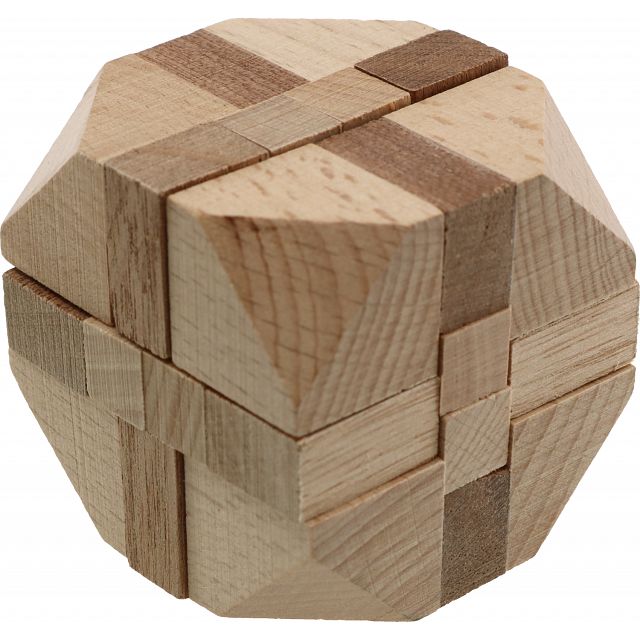Introduction to Mosaic Puzzles
Mosaic puzzles capture our imagination with their intricate designs and vibrant pieces. These puzzles, where small colored pieces fit together to form a larger image, are both an art form and a brain exercise. Puzzles like these date back to ancient times, adorning the floors and walls of historical structures. Today, they serve as an engaging pastime that sharpens the mind and soothes the soul.
![]()
At their heart, mosaic puzzles involve arranging various shapes to create a cohesive picture. This requires keen observation and strategic thinking. People of all ages can enjoy the challenge they present, making them a popular choice for families and solo players alike.
For beginners, understanding the basic techniques is crucial to enjoyment and success in puzzle solving. As skills improve, enthusiasts seek out advanced methods and tools to tackle more complex designs. Overcoming the difficulties each puzzle presents is part of the allure, building patience and problem-solving abilities. Those keen on incorporating learning with fun might find mosaic puzzles an excellent educational tool.
Whether you’re starting out or looking to refine your approach to these fascinating puzzles, the upcoming sections will provide valuable insights. From the foundations of skilled puzzling to the nitty-gritty of advanced strategies and essential tools, this blog aims to guide you on your mosaic puzzle solving journey. So, prepare to delve into the world of colorful pieces and compelling patterns.
The Basics of Mosaic Puzzle Solving
Mastering the basics of mosaic puzzle solving sets a strong foundation for more complex challenges.
Understand the Patterns
Start by studying the image or pattern you aim to create. Identify areas of solid color or repeated motifs that can guide your piece placement.
Sort Your Pieces
Before diving in, sort the pieces by color, shape, or size. This simplification will save you time and make the solving process smoother.
Begin with the Borders
Building the outer edge gives structure to work within. It defines the puzzle’s scope, making it easier to fill in the center.
Tackle Larger Sections First
Focus on the larger, more obvious sections of the puzzle initially. Completing these can provide a sense of progress and motivate you.
Use Trial and Error
Expect some trial and error, especially when fitting similar-looking pieces. Don’t hesitate to try multiple placements. With practice, you’ll improve your skill in spotting the right fit.

Take Breaks When Needed
If you get stuck, take a short break. Sometimes stepping away can refresh your perspective and help you see new solutions.
By adhering to these basic principles, you will not only enhance your enjoyment of mosaic puzzles but also develop your skills in pattern recognition and strategic thinking.
Advanced Techniques in Mosaic Puzzle Solving
As your skills progress in assembling mosaic puzzles, employing advanced techniques will elevate your solving prowess. These strategies not only enhance your efficiency but also add a rewarding depth to the puzzle-solving experience. Let’s explore some refined tactics that can help you tackle even the most challenging mosaics.
Identify and Group Sub-Patterns
Focus on small recurring shapes or patterns within the larger image. Group these similar sub-patterns to simplify assembly.
Use the ‘Knolling’ Method
Lay out all your pieces systematically at 90-degree angles. This organized approach, known as ‘knolling’, makes piece identification faster.
Implement a Color Gradient Strategy
For puzzles with gradual color changes, organize pieces into a gradient. This will make finding the correct placement for subtle color variations easier.
Enhance Spatial Intelligence
Practice visualizing where a piece fits without physically placing it. Enhancing spatial intelligence saves time and avoids disruption of already-placed pieces.
Develop a Pacing Rhythm
Find a steady pace that keeps your motivation up. A consistent rhythm prevents burnout and maintains concentration for longer periods.
Using these advanced techniques in your puzzle-solving toolkit will give you the expertise to approach any mosaic puzzle with confidence. With patience and practice, you will notice improvements in your ability to solve complex puzzles with ease.
Essential Tools for Mosaic Puzzle Enthusiasts
For mosaic puzzle enthusiasts, the right tools can make a world of difference. These tools not only aid in sorting and placing pieces but also enhance the overall solving experience. Here is a list of essential tools that can help you become more proficient at solving mosaic puzzles:
Quality Tweezers
Good tweezers are a must-have. They help pick up and place small pieces with precision, avoiding frustration.
Puzzle Sorting Trays
Sorting trays let you organize pieces by color or shape. This method keeps pieces from getting lost and speeds up the process.
Magnifying Glass
A magnifying glass can be handy, especially for puzzles with tiny, intricate pieces. It helps to see details more clearly.
Puzzle Saver Glue
If you want to keep your puzzle intact after completing it, puzzle saver glue is essential. It seals and protects the artwork.
Work Surface
A large, flat surface gives you room to spread out pieces. Portable puzzle mats can roll up, saving your progress.
Adequate Lighting
Good lighting is important to see the colors and details of your puzzle. A desk lamp or natural light works best.
Having the right set of tools helps you focus more on puzzle-solving techniques and less on handling challenges. Invest in these tools, and enjoy an uninterrupted, engaging mosaic puzzle-solving experience.

Common Challenges and How to Overcome Them
Like any worthwhile pursuit, solving mosaic puzzles can have its fair share of obstacles. By recognizing these common challenges and learning how to overcome them, you can ensure a more enjoyable and less frustrating experience. Here are some of the typical difficulties faced by puzzle solvers and tips to conquer them.
Feeling Overwhelmed by Complex Patterns
When faced with an intricate design, it’s easy to feel overwhelmed. To manage this, break the pattern into smaller sections. Focus on one area at a time, and gradually piece the puzzle together.
Trouble with Similar Pieces
Puzzles with pieces that look alike can be tricky. The key is to compare the minute differences closely. Using a magnifying glass can help distinguish subtle variations.
Losing Motivation
Sometimes, a lack of progress can dampen your spirits. Setting small, achievable goals can provide a sense of accomplishment and keep you motivated through longer projects.
Pieces Going Missing
Pieces can get lost if the work area is cluttered. Always maintain a tidy space, and consider using puzzle sorting trays to keep everything organized.
Difficulty with Placement
Placing small pieces precisely can test your patience. Utilize quality tweezers to handle and position pieces with greater control.
By anticipating these common issues and applying the suggested strategies, you’ll be able to navigate through the challenges with greater ease. Remember, every challenge overcome is a step forward in mastering the art of mosaic puzzle solving.
Tips for Selecting the Right Mosaic Puzzles
Choosing the right mosaic puzzles can enrich your puzzling experience and keep your interest peaked. Here are some practical tips to consider when selecting a puzzle:
Consider the Complexity Level
Start with simpler designs if you are a beginner. Look for puzzles with bigger pieces and straightforward patterns. As you gain confidence, move on to more intricate puzzles.
Look at the Puzzle Size
Think about how much space you have. Larger puzzles need more room. Also, larger puzzles take longer to complete, so choose a size that fits your patience level.
Examine the Color Contrast
High color contrast helps distinguish pieces. This is especially useful for beginners. Puzzles with subtle color changes pose a greater challenge.
Check the Piece Cut Styles
Different puzzles have pieces cut in varied styles. Some interlock tightly, while others are more loose-fitting. Choose what appeals to your preference.
Read Reviews and Recommendations
Learn from other puzzle enthusiasts. Reviews often mention the puzzle’s quality and level of difficulty. This can guide your choice.
Consider the Theme or Image
Pick a theme or image you like. This will keep you engaged. If the picture speaks to you, the time you spend on puzzling will be more enjoyable.
Taking these tips into account, you can find a mosaic puzzle that suits your skill level, space, and interests. The right puzzle selection will enhance your enjoyment and offer a satisfying challenge.
Incorporating Mosaic Puzzles into Educational Activities
Mosaic puzzles are not just for fun; they are also valuable educational tools. Teachers and parents can use these puzzles to teach various skills and concepts.
Enhance Cognitive Skills
Mosaic puzzles stimulate the brain and improve cognitive functions. They help develop spatial awareness, memory, and problem-solving skills.
Improve Fine Motor Skills
Assembling mosaic puzzles requires precision and coordination. This activity enhances fine motor skills, particularly in young children.
Encourage Creativity and Art Appreciation
Through mosaic puzzles, learners can express themselves creatively. It also increases their appreciation for art and design.
Learn About History and Cultures
Many mosaic puzzles feature historical themes or cultural designs. Solving these puzzles can teach kids about history and different cultures.
Facilitate Teamwork and Communication
Working on a mosaic puzzle in a group setting promotes teamwork. It encourages learners to communicate and collaborate effectively.
Integrate with Math and Geometry Teaching
Teachers can integrate puzzles into lessons on math and geometry. Puzzles can make learning these subjects more engaging.
Assess Problem-solving Abilities
Educators can use puzzles to assess students’ problem-solving skills. It’s an effective way to evaluate their critical thinking.
Incorporating mosaic puzzles into learning activities can make education more dynamic. It turns abstract concepts into tangible problems to solve. Through these engaging and hands-on experiences, learners of all ages can benefit.
Conclusion and Encouragement for Puzzle Enthusiasts
You’ve journeyed through the depths of mosaic puzzles, from foundational techniques to advanced strategies. Along the way, you’ve discovered essential tools and faced common challenges head-on. Whether you’re piecing together vivid landscapes or abstract patterns, remember that each puzzle offers a unique adventure in problem-solving.
Embrace each challenge as an opportunity to grow. Remain patient and persistent, and your skills will flourish. With the tips and techniques shared here, you’re well-equipped to tackle even the most intricate mosaic puzzles. Keep pushing the limits of what you can achieve with each piece you place.
As you select your next mosaic puzzle, consider the joy of the process itself—not just the satisfaction of the final image. The moments spent fitting each piece serve as a testament to your dedication and a chance to enhance your cognitive abilities.
Most importantly, share the love for mosaic puzzles with others. Whether through family time, educational activities, or puzzle parties, spreading the enthusiasm for these intricate designs can multiply the fun and learning opportunities.
In the world of mosaic puzzles, every piece plays a role, just as in life. The complexity may seem daunting at first, but, piece by piece, the picture comes together. Dive into your next challenge with the same spirit, and watch as your mosaic masterpiece unfolds before your eyes.
Happy puzzling, and may your next mosaic puzzle adventure be filled with discovery and satisfaction!
